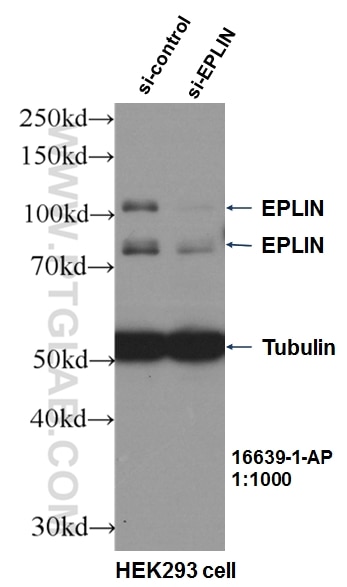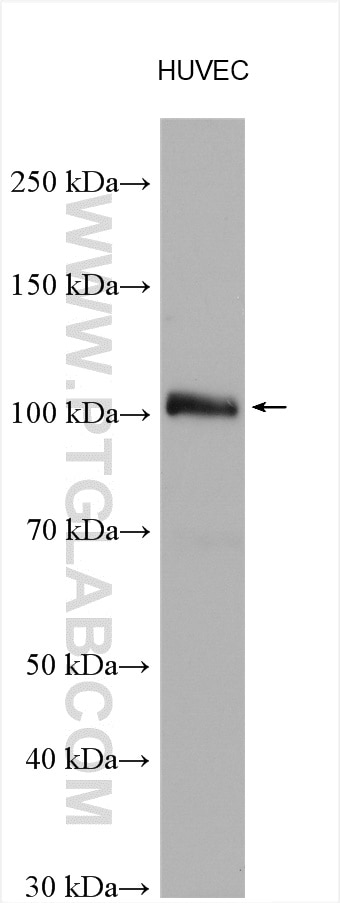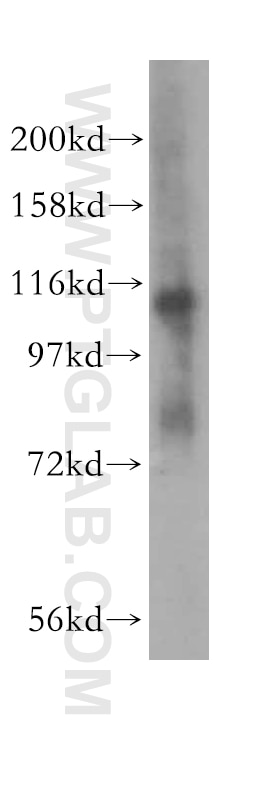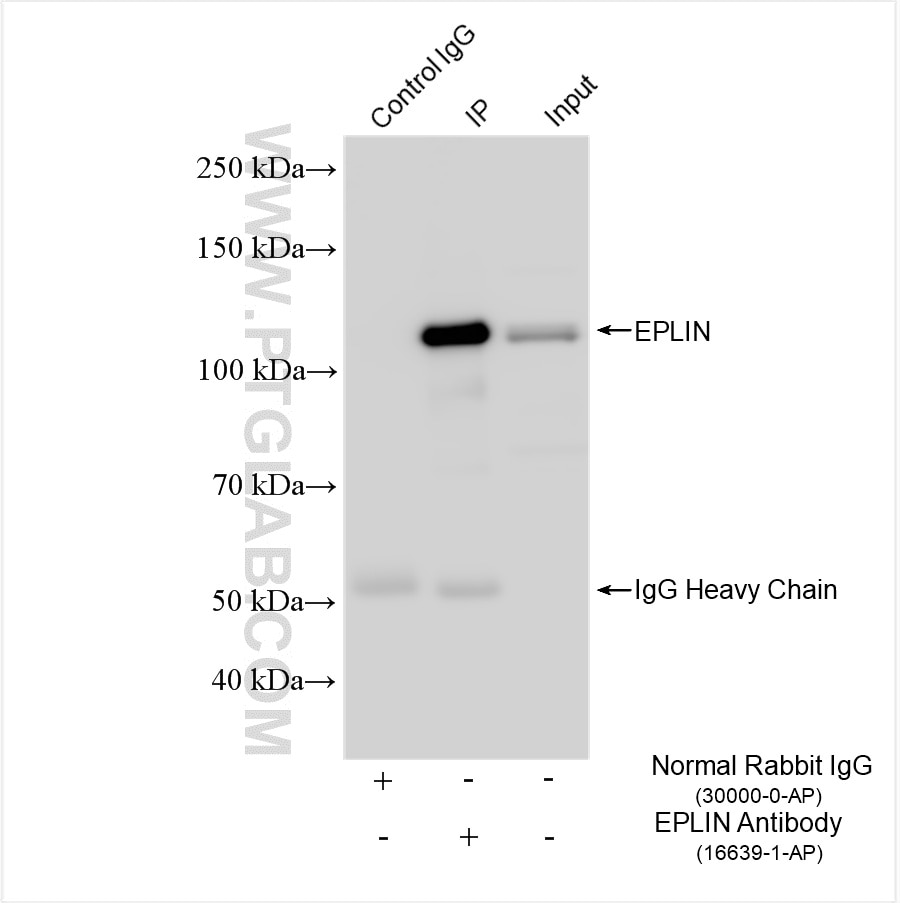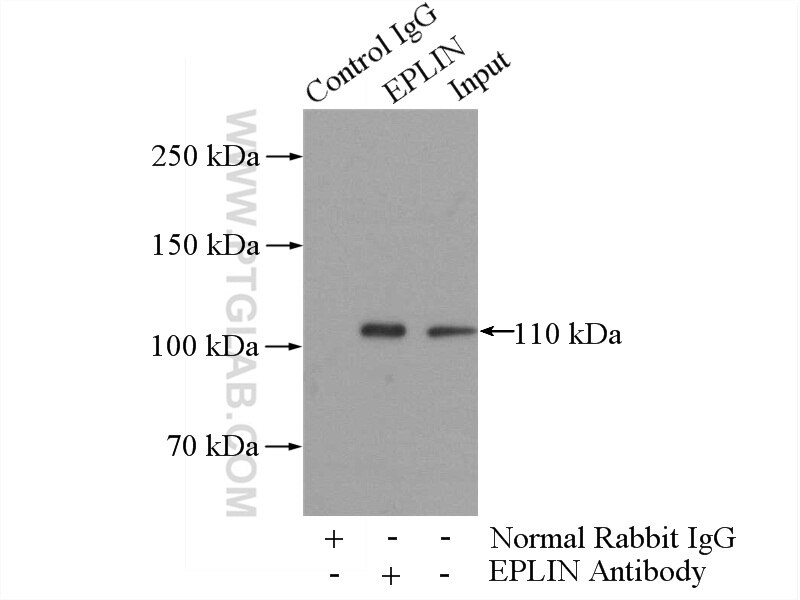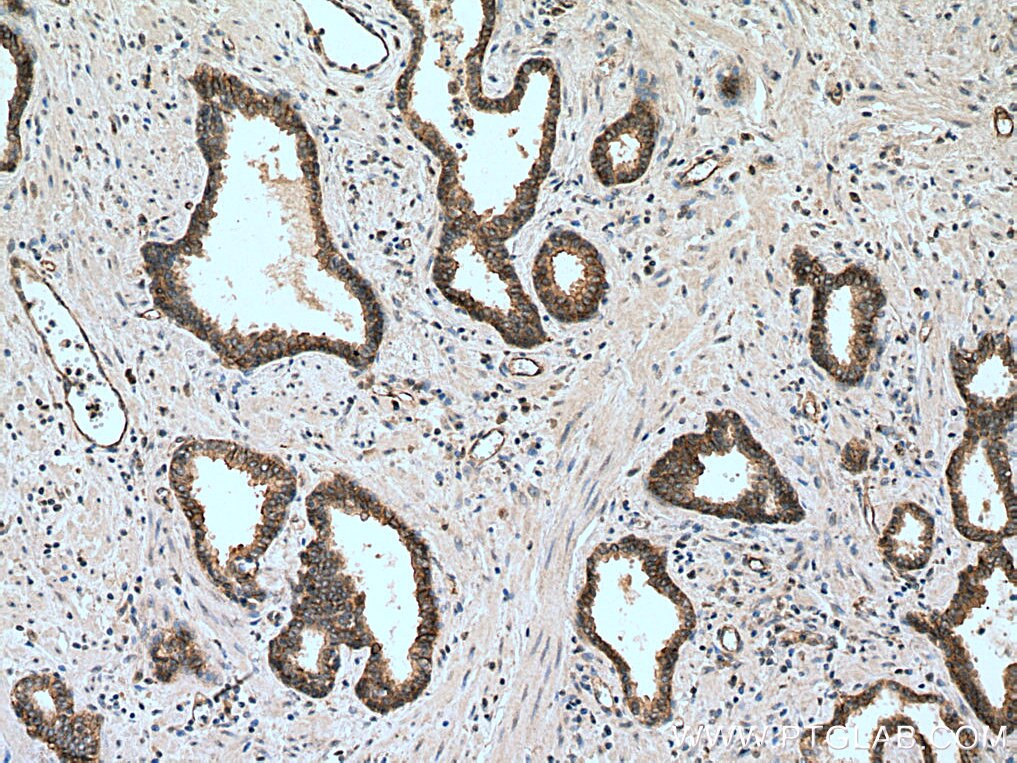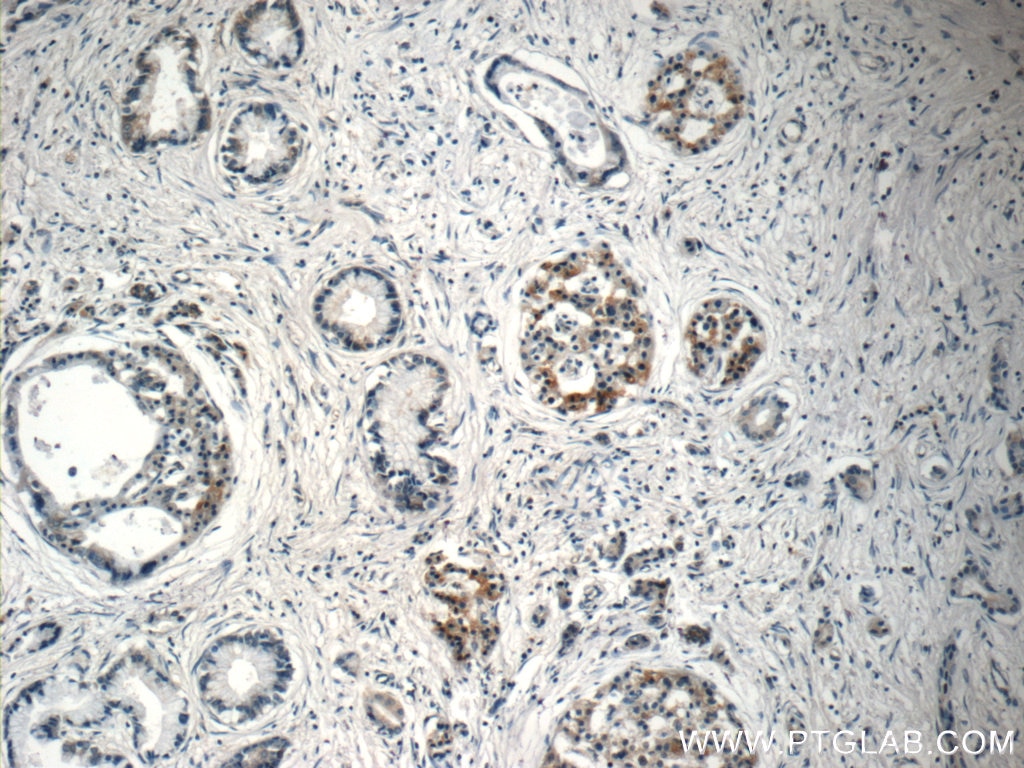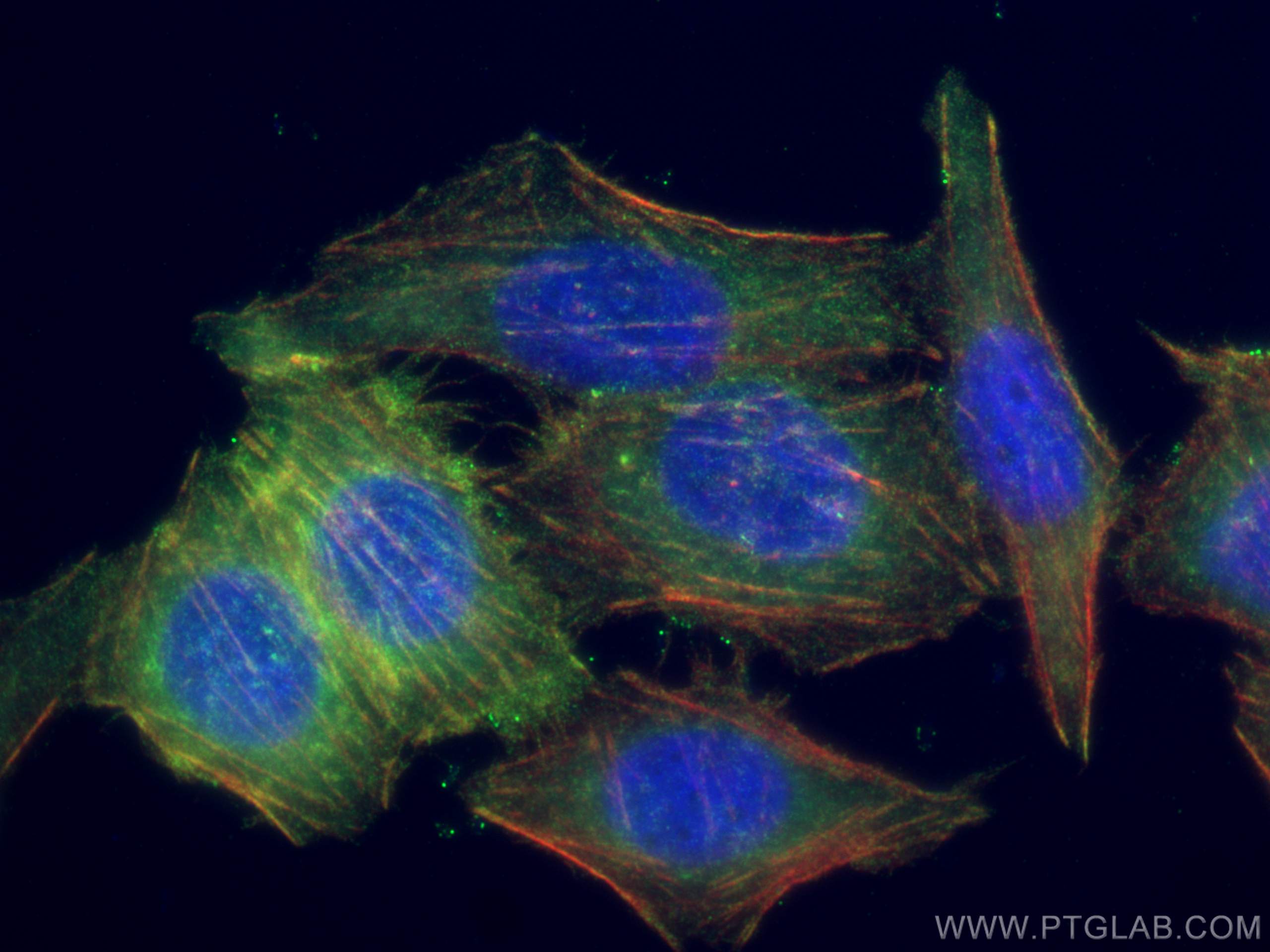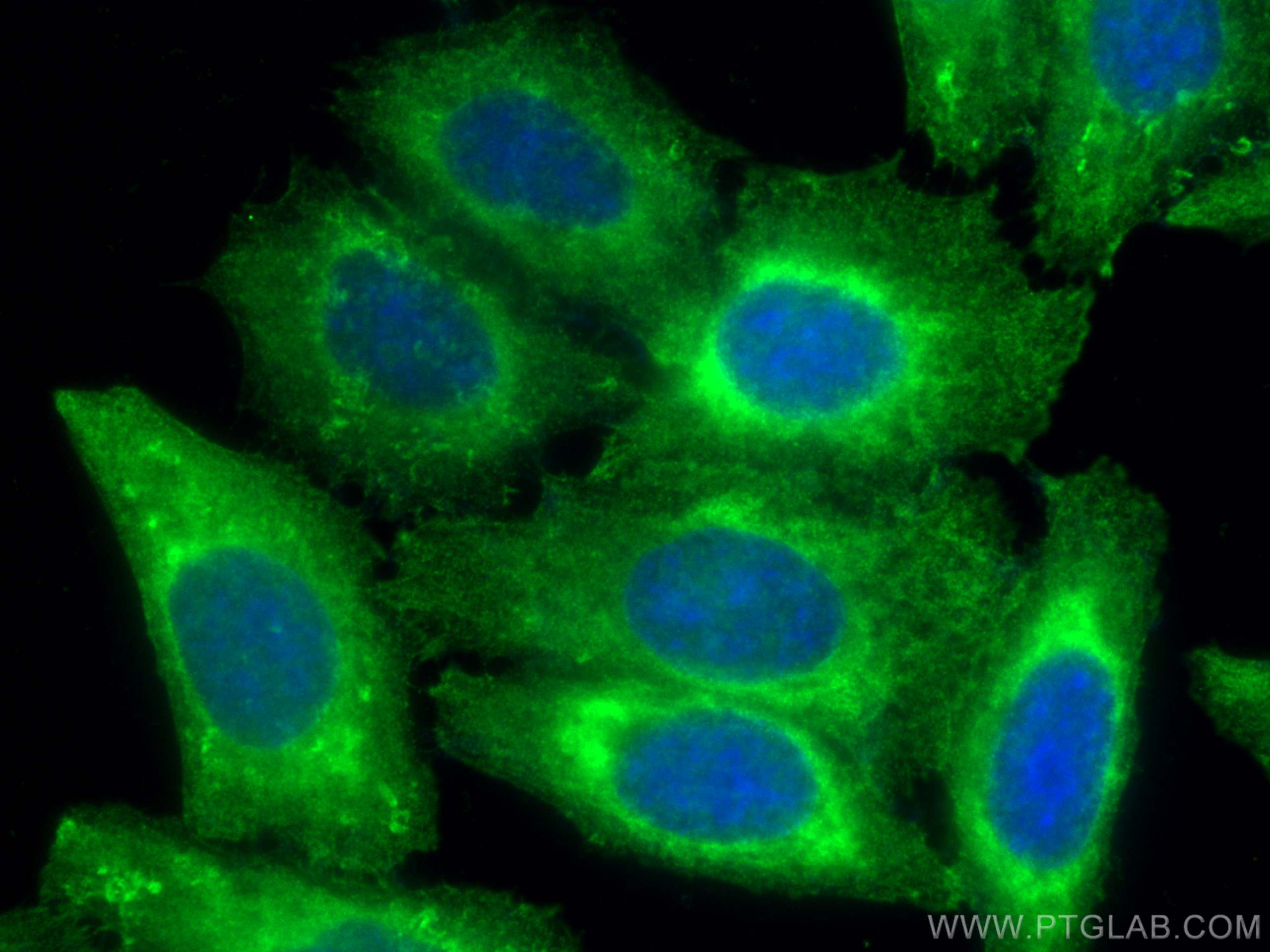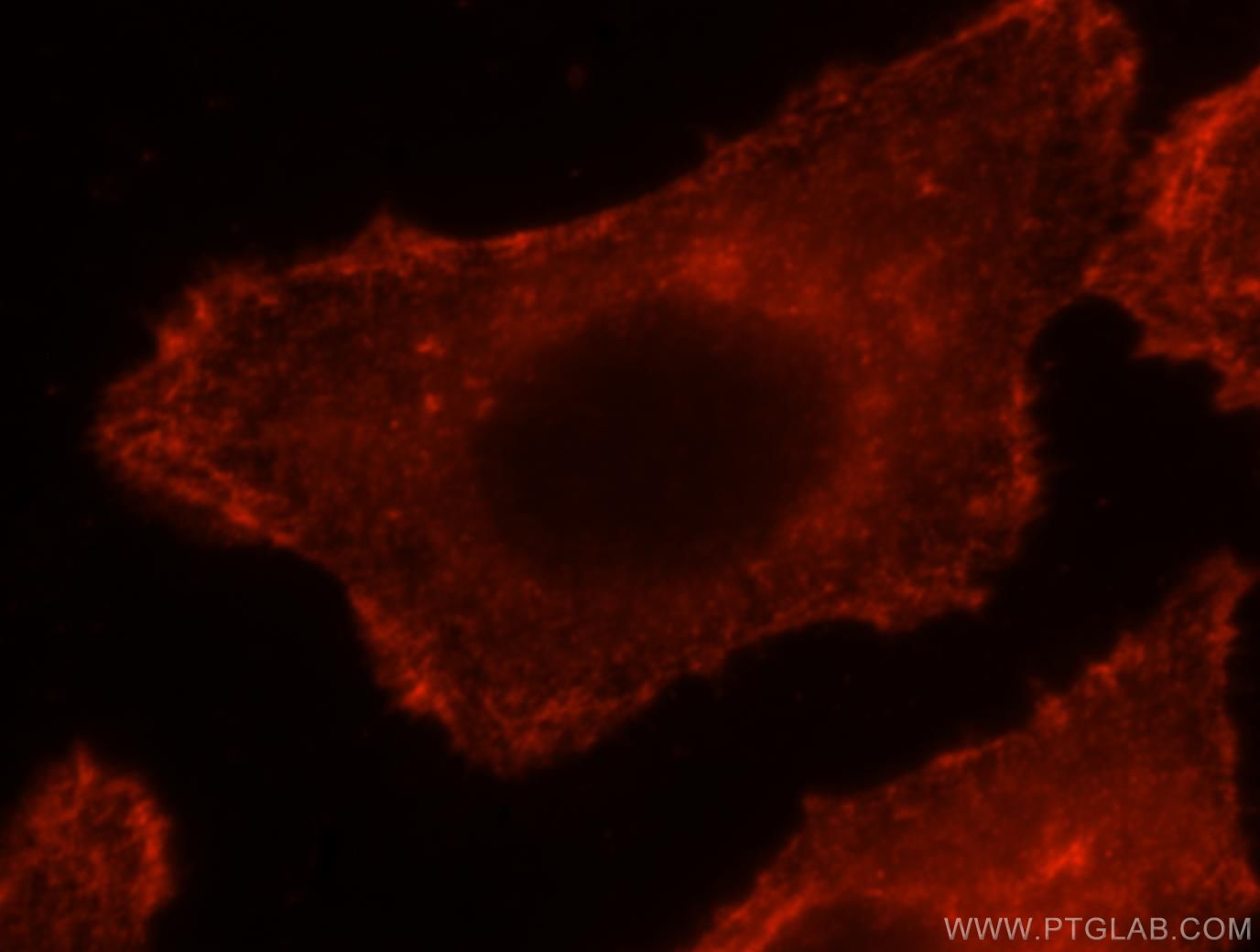Validation Data Gallery
Tested Applications
| Positive WB detected in | HUVEC cells, HEK-293 cells, human placenta tissue |
| Positive IP detected in | HepG2 cells, mouse liver tissue |
| Positive IHC detected in | human prostate cancer tissue, human pancreas cancer tissue Note: suggested antigen retrieval with TE buffer pH 9.0; (*) Alternatively, antigen retrieval may be performed with citrate buffer pH 6.0 |
| Positive IF/ICC detected in | PC-3 cells, HepG2 cells |
Recommended dilution
| Application | Dilution |
|---|---|
| Western Blot (WB) | WB : 1:5000-1:50000 |
| Immunoprecipitation (IP) | IP : 0.5-4.0 ug for 1.0-3.0 mg of total protein lysate |
| Immunohistochemistry (IHC) | IHC : 1:50-1:500 |
| Immunofluorescence (IF)/ICC | IF/ICC : 1:50-1:500 |
| It is recommended that this reagent should be titrated in each testing system to obtain optimal results. | |
| Sample-dependent, Check data in validation data gallery. | |
Published Applications
| KD/KO | See 1 publications below |
| WB | See 4 publications below |
| IHC | See 3 publications below |
| IF | See 2 publications below |
Product Information
16639-1-AP targets EPLIN in WB, IHC, IF/ICC, IP, ELISA applications and shows reactivity with human, mouse, rat samples.
| Tested Reactivity | human, mouse, rat |
| Cited Reactivity | human, mouse |
| Host / Isotype | Rabbit / IgG |
| Class | Polyclonal |
| Type | Antibody |
| Immunogen |
CatNo: Ag9994 Product name: Recombinant human LIMA1 protein Source: e coli.-derived, PGEX-4T Tag: GST Domain: 261-401 aa of BC001247 Sequence: KPLSPDSRASSLSESSPPKAMKFQAPARETCVECQKTVYPMERLLANQQVFHISCFRCSYCNNKLSLGTYASLHGRIYCKPHFNQLFKSKGNYDEGFGHRPHKDLWASKNENEEILERPAQLANARETPHSPGVEDAPIAK 相同性解析による交差性が予測される生物種 |
| Full Name | LIM domain and actin binding 1 |
| Calculated molecular weight | 85 kDa |
| Observed molecular weight | 90 kDa, 110 kDa |
| GenBank accession number | BC001247 |
| Gene Symbol | EPLIN |
| Gene ID (NCBI) | 51474 |
| RRID | AB_2136657 |
| Conjugate | Unconjugated |
| Form | |
| Form | Liquid |
| Purification Method | Antigen affinity purification |
| UNIPROT ID | Q9UHB6 |
| Storage Buffer | PBS with 0.02% sodium azide and 50% glycerol{{ptg:BufferTemp}}7.3 |
| Storage Conditions | Store at -20°C. Stable for one year after shipment. Aliquoting is unnecessary for -20oC storage. |
Background Information
EPLIN is a cytoskeletal protein that is preferentially expressed in epithelial cells and is implicated in regulation of cytoskeletal dynamics and cytokinesis. In human, there are two known isoforms, EPLIN-a and -b, generated by alternative promoter usage from a single gene. The 110 kDa EPLIN-β isoform represents the full-length protein and the 90 kDa EPLIN-α isoform lacks the amino-terminal 160 amino acids. EPLIN-a expression is often down-regulated in cancerous cells and tissues. (PMID: 10806352, 31644899)
Protocols
| Product Specific Protocols | |
|---|---|
| IF protocol for EPLIN antibody 16639-1-AP | Download protocol |
| IHC protocol for EPLIN antibody 16639-1-AP | Download protocol |
| IP protocol for EPLIN antibody 16639-1-AP | Download protocol |
| WB protocol for EPLIN antibody 16639-1-AP | Download protocol |
| Standard Protocols | |
|---|---|
| Click here to view our Standard Protocols |
Publications
| Species | Application | Title |
|---|---|---|
Exp Mol Med The deubiquitinating enzyme STAMBP is a newly discovered driver of triple-negative breast cancer progression that maintains RAI14 protein stability | ||
J Cell Biol Rab40-Cullin5 complex regulates EPLIN and actin cytoskeleton dynamics during cell migration. | ||
Acta Histochem Cytochem EPLINβ Is Involved in the Assembly of Cadherin-catenin Complexes in Osteoblasts and Affects Bone Formation. | ||
Cell Biol Toxicol M6A modification-mediated LIMA1 promotes the progression of hepatocellular carcinoma through the wnt-βcatenin/Hippo pathway | ||
Oral Dis LIMA1 Is a Prognostic Senescence-Inhibitory Gene in Head and Neck Squamous Carcinoma | ||
Proteomics A proteomic signature and potential pharmacological opportunities in the adaptive resistance to MEK and PI3K kinase inhibition in pancreatic cancer cells |

